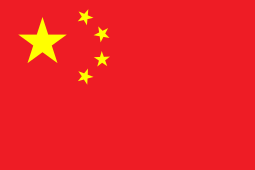
Why You CAN'T Trust Humidity Indicator Cards Made in China!
 In the early 1960s, a small company named Humidial, based in Colton, CA, introduced the humidity indicator card, a truly one-of-a-kind product. As of mid-2023, there exists a diverse range of applications for humidity indicator cards, which essentially consist of absorbent paper impregnated with a solution and are intended to "indicate" the humidity level. In manufacturing environments, the single spot humidity card designed to show whether the humidity level is at or above 8% Relative Humidity is ubiquitous, meaning it is found in a broad spectrum of applications. Individuals employed in the industry are aware that a pink circle on a humidity indicator card signifies a "bad" condition and prompts necessary actions. Consequently, in organizations lacking a strong focus on quality, this awareness has sparked a drive within the manufacturing environment to avoid producing humidity indicator cards that exhibit a pink color.
In the early 1960s, a small company named Humidial, based in Colton, CA, introduced the humidity indicator card, a truly one-of-a-kind product. As of mid-2023, there exists a diverse range of applications for humidity indicator cards, which essentially consist of absorbent paper impregnated with a solution and are intended to "indicate" the humidity level. In manufacturing environments, the single spot humidity card designed to show whether the humidity level is at or above 8% Relative Humidity is ubiquitous, meaning it is found in a broad spectrum of applications. Individuals employed in the industry are aware that a pink circle on a humidity indicator card signifies a "bad" condition and prompts necessary actions. Consequently, in organizations lacking a strong focus on quality, this awareness has sparked a drive within the manufacturing environment to avoid producing humidity indicator cards that exhibit a pink color.
How does a Chinese company produce an Indicator Card?

They manipulate the chemical formula so that the product remains color-stable, and the purchaser receives a “card that always has a positive indication.” Is this just a deceptive practice or a failure to understand the basic technology and meaning of humidity level indication?

Fundamentally, creating a humidity card that does not change color should be so startlingly inexpensive that it should give the experienced buyer pause for concern. Add to that the willingness of PRC companies to utilize industrial trade names of companies with ISO certification that have long been established in the marketplace. As stated by the Technical Director of IMPAK Corporation, the message is clear: "Buyer beware," but, most importantly, "The user should be concerned!"
